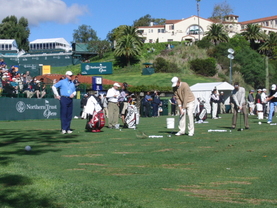 The reality of playing golf on tour is that you are always searching for a competitive edge over the golf course you're playing and ultimately your opponents, which doesn't really make it that different from any other stick and ball sport, where a score is involved, except for one important qualification; On the pro golf tour you have to shoot consistently low golf scores just to make cuts in tournaments before you can make any money. 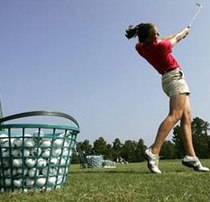 In other words you don’t get a dime for playing less than your best for four days. So every moment that you are not competing at a golf tour event somewhere you’re on the practice fairway and practice green finding ways to sharpen, refine and develop your golfing skills in an effort to make more cuts, more money and the opportunity to play in the big league on a major golf tour. "In essence you’re practicing your golf skills exclusively to perform better on the golf course"  Design Your Golf Practice You practice so you can become so skilled at playing golf that you make a lot more cuts than you miss - which translates into a lot more money in the bank account and the possibility of winning golf tournaments. So I‘d like to share with you a key distinction I learned about how top tour golfers practice effectively; “You must practice in such a way that there is a high probability that you will perform better on the golf course." Another way of thinking about it is like this; “you design your practice sessions solely to improve your playing performances.” I know that this might seem quite obvious to you but this is not what most of the golfers I’ve observed do when they practice at golf ranges. I’m sure that at some level they genuinely want to improve their golf skills to improve their performances, but they don’t think about designing their golf practice for improvement deliberately enough. Perfect Match Practice When you practice your golf skills you are attempting to modify or adjust an aspect of your physical behaviour by conditioning a new set of behaviours that you can rely on when it really counts, through a large quantity of highly focused repetition. I’m sure that you can see that this shouldn’t be taken lightly? You need to be absolutely sure that the information you’re using is the perfect match for your particular problem. Also you cannot improve your skill set if you’re dividing your attention between trying to perfect a particular movement and also trying to hit your shot to a target on the golf range. The Golf Practice Multi-tasking Myth In the workplace this would be called multi-tasking and a raft of recent research shows that splitting your attention between tasks significantly reduces your effectiveness to perform optimally in the different tasks you’re focusing on. “It is a myth to think you can work on improving some aspect of your golf swing whilst at the same time you’re trying to hit your golf ball to a target.” But this is precisely what the vast majority of amateur golfers do.  The problem could be that golfers are confused about what the right golf practice method is. With all the information available through golf instruction books, DVD’s, golf magazines and golf instruction online it’s a real challenge trying to find information that is highly relevant to your needs. Relevance then Repetition When I played golf on tour I discovered that golf practice was really about continually finding ways to improve my bottom line results. So you are always zeroing in on the ideal practice method or drill because you’re travelling continually and you need to make sure that the time you invest in your improvement is highly specific and manageable. So it’s not unusual to see a professional golfer working on one particular drill for a year or more. Since any physical change requires literally thousands of repetitions in order to build up sufficient memory, changing a weak skill requires a pro tour player to practice the drill whenever he/she gets the opportunity – which is often. They will practice with a ball and without a ball, and they will practice in front of mirrors in their hotel room or windows at the airport; literally anywhere they can perform the practice task that leads them to a new and desired behaviour. When they practice, they practice with a level of intensity that closely matches or simulates a real competitive situation. Practice Like it Matters “Perfect practice makes perfect” is a common cliché in sports, business and life but doesn’t really describe at all what perfect practice is, which just makes it easier for most golfers to perform “practice” without the “perfect” part. "I believe that the ‘perfect’ component is to perform your golf practice with a level of intensity that closely matches or simulates a real competitive situation." This means that you make sure that the entire practice routine is exactly the same routine you use when you play on the golf course. Instead of mindlessly blasting away at golf ball after golf ball you thoughtfully and carefully practice each stroke like nothing else in the world matters as much. I have observed this first hand with some of the greatest golfers in the world. 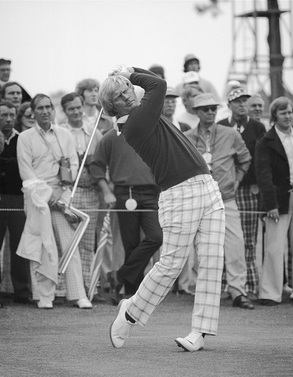 What Jack Nicklaus Taught Me About Deliberate Practice When I was a young assistant professional my idol Jack Nicklaus came to our club to play in our national championship and that week I was fortunate to work at the driving range where I got my first look at how great tour golfers practice to perform. Jack Nicklaus was a study in concentration and not one golf ball he hit was wasted. He hit each practice shot like it really mattered to him and this practice method required his total concentration. He worked on controlling his ball flight so that the ball flew with a similar trajectory and spin shape nearly every time. Where I observed other professionals chatting away with their friends on the range, Jack Nicklaus seemed to me to be the one serious figure who although very pleasant when someone acknowledged him was there for a very specific purpose, he was there to prepare to perform to the best of his ability. Golf Practice is Not a Social Experience
He was not there for a social engagement he was there to work at his craft so he could take it to the course and perform. Golf practice is not a social experience, its work and you’re there solely to improve your performances on the golf course, so you never have enough time to waste on idle chit-chat. This is where I learned an important lesson about practicing like it matters. Never waste my time, never waste a golf shot and make sure that the shot is executed to the best of my ability with my full attention on it. The next time you decide to go to the range to work on your game, consider that you have a marvellous opportunity to start practicing with real purpose. You can design your golf practice so that it’s highly specific, highly engaging and highly repeatable and you’ll discover that this shift in the way you go about performing your practice will build a strong and reliable bridge between practicing on the range and performing on the golf course when it really counts. Lawrie Montague P.S If you enjoy reading our blog posts then let us know because we'd love to hear from you!  David and I are absolutely sure that the pathway to success playing on a professional golf tour is to develop a consistently low competitive score average by developing the golf skills that are what we call "high pay-off golf skills." The logo above (Less than 6 feet) is the Pro Tour Golf College symbol that represents the importance of mastering your golf skills that hit golf shots into this zone consistently. In the following video golf instruction lesson I'll share with you a simple-yet highly effective drill for developing your wedge approach skills that practiced often will help you to play inside the 6 foot zone more often. Lawrie Montague As you would know if you're been reading our blog David Milne co-director of Pro Tour Golf College has been in the US for the past couple of weeks working with some of his tour players and whilst there he has been capturing some video footage to share with the readers of our blog. In this post we'll have a look at Jhonattan (Jonnie) Vegas a rookie on the PGA tour who's already won a tournament which we think is pretty clever. We hope that you enjoy this video of Jhonattan Vegas and that you share it with your friends. Lawrie Montague  How do professional golfers get to play on the USPGA Tour? For most they have to learn their trade on the smaller tours before they graduate to the "Big Show" as the USPGA Tour is known. Last week I spent at the Riviera Country Club working with Michael Sim and observing the talented Aaron Baddeley win his third victory and ending a four year drought for the talented Aussie.  This week I am spending 3 days in Scottsdale with one of my young players Rance De Grussa who is just starting out his pro career on one of the numerous mini golf tours. This tour is called the Gateway Tour and is two levels down from the USPGA Tour. It is based in Arizona & California and it allows aspiring young professionals to compete and learn how to score under pressure.  It is based in Arizona & California and it allows aspiring young professionals to compete and learn how to score under pressure. The courses are not overly tough but the standard of play especially at the top end is very high. In todays field their were two ex USPGA Tour players and half a dozen Nationwide Tour (second tier tour that feeds the main tour). There are over a hundred players who put up US$1,400.00 each week which in effect is they are playing for their own money. The total purse is US$100,000.00 with the winner taking home over US$20,000.00 and the rest dividing up the rest on a sliding scale.  This was Rance's first tournament on the Gateway Tour and he played well today shooting a 4 under 68 which included 2 penalties. He signed his card and was surprised to find the leader had shot a 10 under 62. Second place is 63 and Rance's 68 did not even get him into the top 10. He is tied for 11th position. A very steep learning curve for a young pro but this is where you find out if you have the game and self belief to make it. Expenses including entry fees are between US$1500.00 to US$2,000.00 per week. So over a ten week period if your game is off or not up to the mark you could be US$20,000.00 in debt. Rance does not have a sponser like most of these aspiring Pro's and has worked hard at two jobs in Perth (personal trainer & storeman) and with help from his parents to make this trip and "Live the Dream". I caddied for him today and was impressed with his short game and his ability to stick to a game plan throughout the round.Yesterday I spent time on the range working with him on organising the mental side of his Pre Shot Routine so that he could freewheel it today out on the course under pressure. I have got him committing to "Train like he Plays" so that he can "Play like he Trains". Early start tomorrow and another good performance from the "Rookie" on tour is the plan. David Milne FOR IMMEDIATE RELEASE (Free-Press-Release.com) February 22, 2011 -- “It’s a sad fact that too many aspiring tour golfers will fail in their attempts to make it onto one of the professional golf tours through a tour qualifying school, and of the individuals who do make it onto a golf tour, very few will play consistently well enough to climb up the PGA money list, and we firmly believe that it doesn’t have to be that way.”  David Milne and Lawrie Montague are highly regarded and successful golf instructors who have spent many years training elite amateur and professional golfers in Australia with many of their students going on to play and win on one of the men's and women's professional golf tours. “Unfortunately golf as a game is still a long way behind other sports in the way it develops talent. We still struggle to break free from a perfect golf swing culture that continues to pressure golfers to spend too much of their time perfecting their golf swing technique instead of developing the skills that lead to a low scoring capability in golf tournaments.” According to Mr Montague, many young golf instructors are using video and computer graphics programs to analyse and compare their student’s golf swing with those of leading tour golfers. Unknowingly the student focuses too much of their energy trying to swing the golf club perfectly at the expense of developing their short-game skills, particularly in their formative years. “It doesn't help that on virtually every golf broadcast the attention of commentators is focused on a tour player’s golf swing mechanics. Even sports scientists have fallen victim to the perfect golf swing culture and are developing hi-tech golf swing software programs to break the golf swing down to minute levels.” “We really want to change this perfect golf swing culture to a low golf score culture. Golf is not like gymnastics or ballet where your result is directly attributed to how perfectly you perform a particular routine. Golf has always been a game of score, and the lowest score still wins golf tournaments. The best golfers in the game are not the best tee to green golfers, but they are the most capable at producing lower competitive golf scores. Tiger Woods and Phil Michelson, in-fact every top level golfer playing on one of the PGA tours is much better at their short game than they are at their long game.” Milne and Montague believe that this preoccupation with teaching perfect golf swings is leading to a massive rate of failure amongst exceptional male and female golfers attempting to play on one of the PGA tours. The problem this fixation for perfecting golf swings has created is that struggling tour golfers who hit any form of roadblock in their performances on the golf course usually look straight to their golf swing as being the source of the problem. “The golf swing in most cases is not usually the problem. What they need is an experienced coach that can lead them to different options for improving their performances on the golf course, which was our primary motivation in establishing Pro Tour Golf College. We wanted to help aspiring tour golfers to smash through their limiting self-beliefs and help them onto the path to success on one of the PGA tours. After all, their success is our success." "We developed Pro Tour Golf College around a simple and realistic performance formula; success on tour equals your competitive score average. A lower score average in professional tournaments will equal more and more success on tour." Milne and Montague's 'Tour Player Program' is a unique score focused golf training program designed specifically to train aspiring male and female golfers to become more competitive in golf tournaments by improving their high pay-off golf skills so they can lower their competitive score average and compete successfully on a professional golf tour. The Pro Tour Golf College is a full-time golf college for tour golfers and those who want to be based at the Joondalup Resort in Perth Western Australia. Interested golfers can gain access to more information on their programs at http://www.protourgolfcollege.com 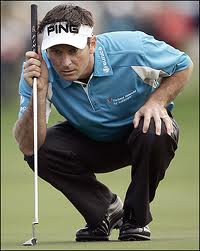 PGA Tours golfer Mark Wilson has had a brilliant start to the year winning two events out of the first three and amassing PGA money of more than two million dollars. A great tee-to-green golfer, Mark Wilson’s greens in regulation average after four events on the PGA tour was more than 70 percent, or around fourteen greens out of eighteen in regulation. I’m a real fan of the way Mark Wilson plays, and I really admire the way he can swing the golf club so much so that I have put together an eleven page detailed analysis of his golf swing technique for you and I compare some of the principles of his golf swing technique with those of the great Ben Hogan’s. I encourage you to read, study and enjoy this article on Mark Wilson’s excellent golf swing technique. I know you’ll enjoy reading this detailed analysis and if you do let me know by sending me your comments. Until next time, Lawrie Montague
 The first day of the Northern Trust Open at Riviera Country Club finished with a handfull of players still not completing their round and they will have to finish tomorrow morning. There are nine players currently tied for the lead at 4 under and three of them are Aussies. It is a congested leader board with seven Aussies in the top 26. 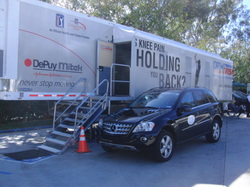 We arrived at the club house in the Mercedes courtesy car just after 5am and it was very cold, below 5 degress Celcius. Michael went to the fitness trailer and did some stretching and warm up drills with his trainer for 1/2 an hour. While he did this his caddy prepared his bag for the day. This includes checking and cleaning his clubs, replacing and marking new balls and most importantly loading up with water and healthy snacks for the day.  At 5.50am it was my turn to do my job which is to prepare him for the round. This involves giving him feedback not only on his swing technique but also getting his main focus on rhythm and tempo. Michael normally starts with putting but there were no lights on and it was still 45 minutes before sunrise so we walked down the steep hill to the driving range which had lights. Started with 10 minutes of chipping from different lies (fairway & rough), 5 minutes of bunker shots and then hit balls. Michael always starts with his wedges moving through the bag to the driver and finishes with a few short irons. Every shot he hits from chip to driver is done with a full Pre Shot Routine simulating what he will do out on the course. As he was teeing off the 1st tee it was back up the hill to the clubhouse for a few putts to get the speed of the greens which were running at 11.5 on the stipmeter and on Riviera's small sloping greeens translates to very fast especially if you get above pin high.  The first three holes played tough for the early starters as the cold atmosphere doesn't allow the ball to fly normally so adjustment is required in club selection. Michael got off to a good start making birdies on hole 3 and 6 to be 2 under and leading at that point. A couple of bogies on 9 and 10 set him back but he cancelled them out with birdies on 12 and 14. A bogey on 18 added up to a 1 under score of 70 and a tie for 26th position. Overall a solid start and it was good to see his putting was back to its normal high standard of excellent distance control especially on hole 9 where he lagged his 1st putt from 87 feet to tap in distance. Tomorrow the weather forcast is not good and the prediction is rain which although may slow the greens down it is inperative that approachshots are hit from fairways as shots from the kikuyu rough when wet make it very difficult to find the small greens. News from the course is that Bubba Watson has withdrawn due to an injury to his oblique abdorminal muscle. Jim Fuyrk is using new equipment and he struggled with a 4 over 75 the same score as Steve Elkingon who won the 1995 USPGA right here at Riviera. Dustin Johnson was given a 2 stroke penalty for arriving late to the tee and was 1 minute from being disqualified. He got his tee off time mixed up.!! Hope the rain stays away otherwise it could be a long disruptive day for eveyone especially the organisers and ground staff. Good Golfing David Milne  I am in Los Angeles at the US PGA Tour event (Northern Trust Open) this week working with my player US PGA Tour player Michael Sim. It is being played at the famous Riviera Country Club layout which was constructed in 1926 by architect George C Thomas.  After walking 18 holes with Michael charting the course I now do understand why Riviera is considered one of the "Classic" courses in the USA. It had been referred to as "Hogan's Alley" by Jimmy Dermerit after Hogan won Three tournaments within 18 months in the 1940's. It is not overly long but its main defence is it's small fast undulating greens where missing your approach on the short side will mean an automatic bogey.  Yesterday was travel day for us and after arriving at Riviera today the first stop was the Titleist truck where Michael's grips were changed. While they were being done which took about 45 minutes he spent time around the chipping green getting used to the condition and kikuyu grass. Spent an hour hitting balls on the range working on his Pre Shot Routines and getting ready to play. Went out on course and played with Peter Tomosulo and veteran Jeff Maggert. After the round Michael caught up with his Physio and had a physical check and massage to make sure he is ready for the coming week.
Another practice day tomorrow and he will also do a 1 hour clinic for the Sponsers guest after lunch. The draw is out and he's off at 6.50am on Thursday and at 11.50 on Friday. On Thursday we will leave for the golf course at 5am to make sure he has ample time to prepare and be ready to tee off at 6.50am. Looking forward to the week but the weather forcast is for rain nearly every day. David Milne |
Archives
June 2019
|
||||||
Proudly Supported By
Copyright © 2011 - 2018 Pro Tour Golf College
Website Managed By Golf Performance Media
All Rights Reserved
Website Managed By Golf Performance Media
All Rights Reserved

 RSS Feed
RSS Feed



